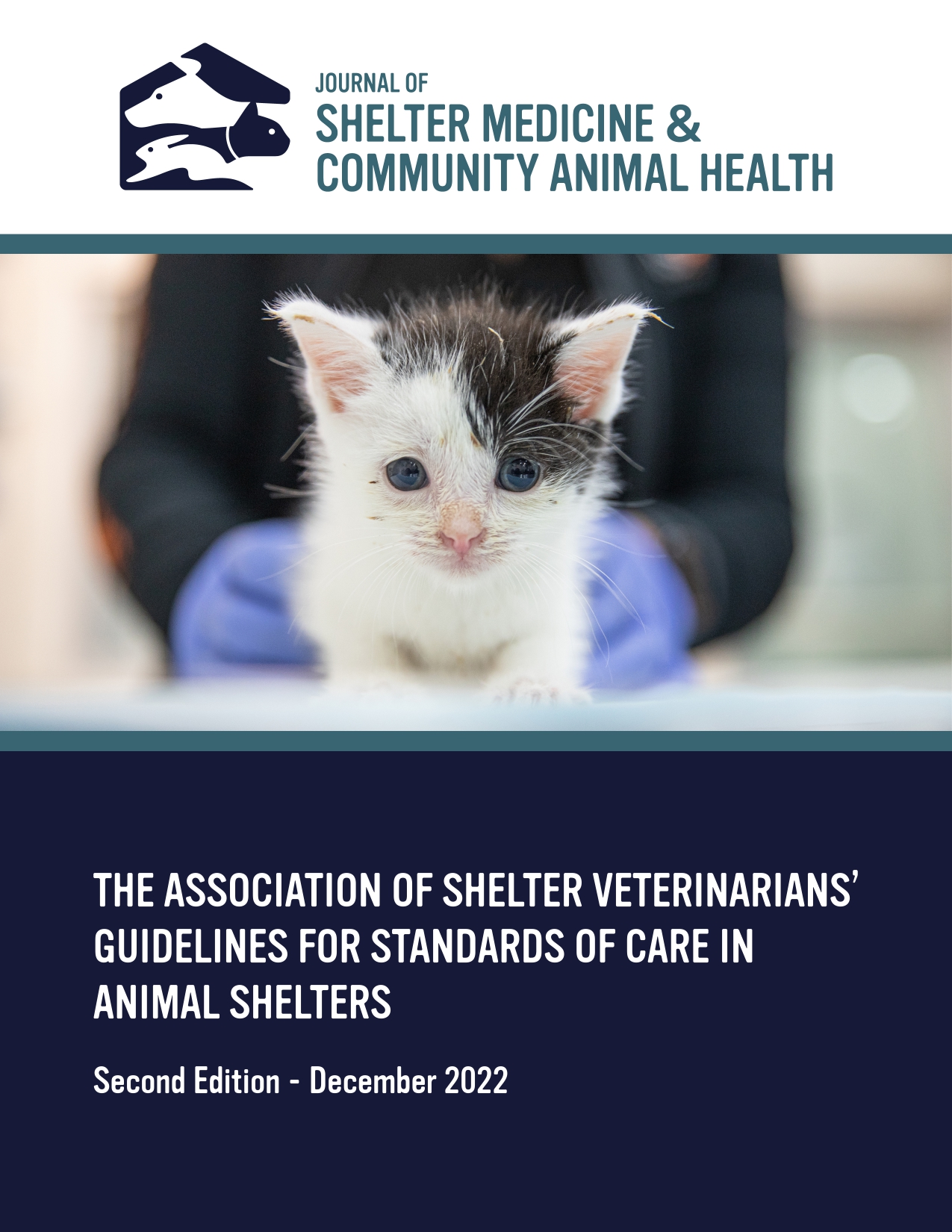Effects of Deferred Puppy Intake on Incidence of Canine Parvovirus Infection and Survival: A Community Case Study
DOI:
https://doi.org/10.56771/jsmcah.v4.109Keywords:
canine parvovirus, puppies, deferred intake, open admissions shelter, limited admissions shelter, transport, transfer, biosecurity, incidence, infectious diseaseAbstract
Canine parvovirus (CPV) threatens many canine populations, particularly those in underfunded, rural shelters, as well as the supporting organizations that transfer/transport puppies from these shelters. This study investigates the impact of a deferred puppy intake protocol on CPV incidence and outcomes among puppies transferred from a rural shelter to a supporting organization in central Ohio (Gigi’s). Rather than housing surrendered puppies within their building, the rural shelter requested that community members defer the surrender of unwanted or stray puppies. Community members then maintained possession until the next scheduled Gigi’s transport, allowing puppies to be directly placed into a clean crate and loaded onto the transport vehicle. After implementation of this protocol, CPV incidence decreased from 47% (18/38) to 9% (9/103) (P < .001). Survival rates increased but this change was not statistically significant (13/18; 72% vs. 8/9; 89%, P = .17). In general, puppies developing CPV after transport were more likely to survive than those diagnosed prior to transport (3/9; 33% vs. 18/18; 100%, P < .001). More stray puppies (20/64; 31%) than owner surrendered puppies (7/77; 9%) were diagnosed with clinical CPV (P < .001). These findings support the effectiveness of deferred intake strategies on mitigating CPV transmission and early illness identification on CPV survival.
Downloads
References
1.
McCaw DL, Hoskins JD. Canine Viral Enteritis. In: Greene CE, ed. Infectious Diseases of the Dog and Cat. 3rd ed. Elsevier Inc; 2006:63–73.
2.
Njenga MK, Nyaga PN, Buoro IBJ, Gathumbi PK. Effectiveness of Fluids and Antibiotics as Supportive Therapy of Canine Parvovirus-2 Enteritis in Puppies. Bull Anim Health Prod Afr. 1990;38:379–389.
3.
Chastant S, Hanna M. Passive Immune Transfer in Puppies. Anim Reprod Sci. 2019;207:162–170. doi: 10.1016/j.anireprosci.2019.06.012
4.
Yang W, Zhao R. Vaccination therapy of Canine Parvovirus (CPV) Infected on Dogs. Highlights in Science, Engineering and Technology. 2024;109:365–369. doi: 10.54097/knvjg817
5.
Appel LD, Barr SC. Canine Parvovirus and Coronavirus. In: Miller L, Hurley K, eds. Infectious Disease Management in Animal Shelters. 1st ed. Wiley Blackwell; 2009:197–208.
6.
Gingrich E, Lappin M. Practical Overview of Common Infectious Disease Agents. In Miller L, Zawistowski, eds. Shelter Medicine for Veterinarians and Staff. 2nd ed. Wiley Blackwell; 2013:301–302.
7.
DeTar L, Doyle E, O’Quin J, et al. Responding to Infectious Disease. In: The Association of Shelter Veterinarians’ Guidelines for Standards of Care in Animal Shelters. JSMCAH. 2022;1(S1):34.
8.
DiGangi BA, Craver C, Dolan ED. Incidence and Predictors of Canine Parvovirus Diagnoses in Puppies Relocated for Adoption. Animals. 2021;11(4):1064. doi: 10.3390/ani11041064
9.
Anderson MEC, Stull JW, Weese JS. Impact of Dog Transport on High-Risk Infectious Diseases. Vet Clin North Am Small Anim Pract. 2019;49(4):615–627. doi: 10.1016/j.cvsm.2019.02.004
10.
Peterson PK, Chao CC, Molitor T, Murtaugh M, Strgar F, Sharp BM. Stress and Pathogenesis of Infectious Disease. Rev Infect Dis. 1991;13(4):710–720. doi: 10.1093/clinids/13.4.710
11.
Office of Research Ohio Development Services Agency. Poverty in Ohio by County 2013–2017 American Community Survey, Washington, DC: US Census Bureau.
12.
United States Census Bureau. QuickFacts Columbus city, Ohio; Ohio. Accessed Jun 12, 2024. Available from: https://www.census.gov/quickfacts/fact/table/columbuscityohio,OH/PST045223
13.
DeTar L, Doyle E, O’Quin J, et al. Animal Transport and Relocation Programs. In: The Association of Shelter Veterinarians’ Guidelines for Standards of Care in Animal Shelters. JSMCAH. 2022;1(S1):55–58.
14.
DeTar L, Doyle E, O’Quin J, et al. Sanitation. In: The Association of Shelter Veterinarians’ Guidelines for Standards of Care in Animal Shelters. JSMCAH. 2022;1(S1):23–26. doi: 10.56771/ASVguidelines.2022
15.
Larson L, Miller L, Margiasso M, et al. Early Administration of Canine Parvovirus Monoclonal Antibody Prevented Mortality After Experimental Challenge. J Am Vet Med Assoc. 2024;262(I4):506–512. doi: 10.2460/javma.23.09.0541
16.
Canine Parvovirus Monoclonal Antibody [package insert]. Elwood, KS: Elanco; 2023.
17.
Spindel ME, Krecic MR, Slater MR, Vigil N. Evaluation of a Community’s Risk for Canine Parvovirus and Distemper Using Antibody Testing and GIS Mapping of Animal Shelter Intakes. J Appl Anim Welf Sci. 2018;21:4:362–374. doi: 10.1080/10888705.2018.1435281
18.
Economic Research Service, United States Department of Agriculture Food Access Research Atlas. Accessed Sep 14, 2024. Available from: https://www.ers.usda.gov/data/fooddesert/
19.
Horecka K, Porter S, Amirian ES, Jefferson E. A Decade of Treatment of Canine Parvovirus in an Animal Shelter: A Retrospective Study. Animals. 2020;10(6):939. doi: 10.3390/ani10060939
20.
Perley K, Burns CC, Maguire C, et al. Retrospective Evaluation of Outpatient Canine Parvovirus Treatment in a Shelter-Based Low-Cost Urban Clinic. J Vet Emerg Crit Care. 2020;30(2):202–208. doi: 10.1111/vec.12941

Additional Files
Published
Issue
Section
License
Copyright (c) 2025 Hayley Hadden, Meghan Herron

This work is licensed under a Creative Commons Attribution 4.0 International License.









